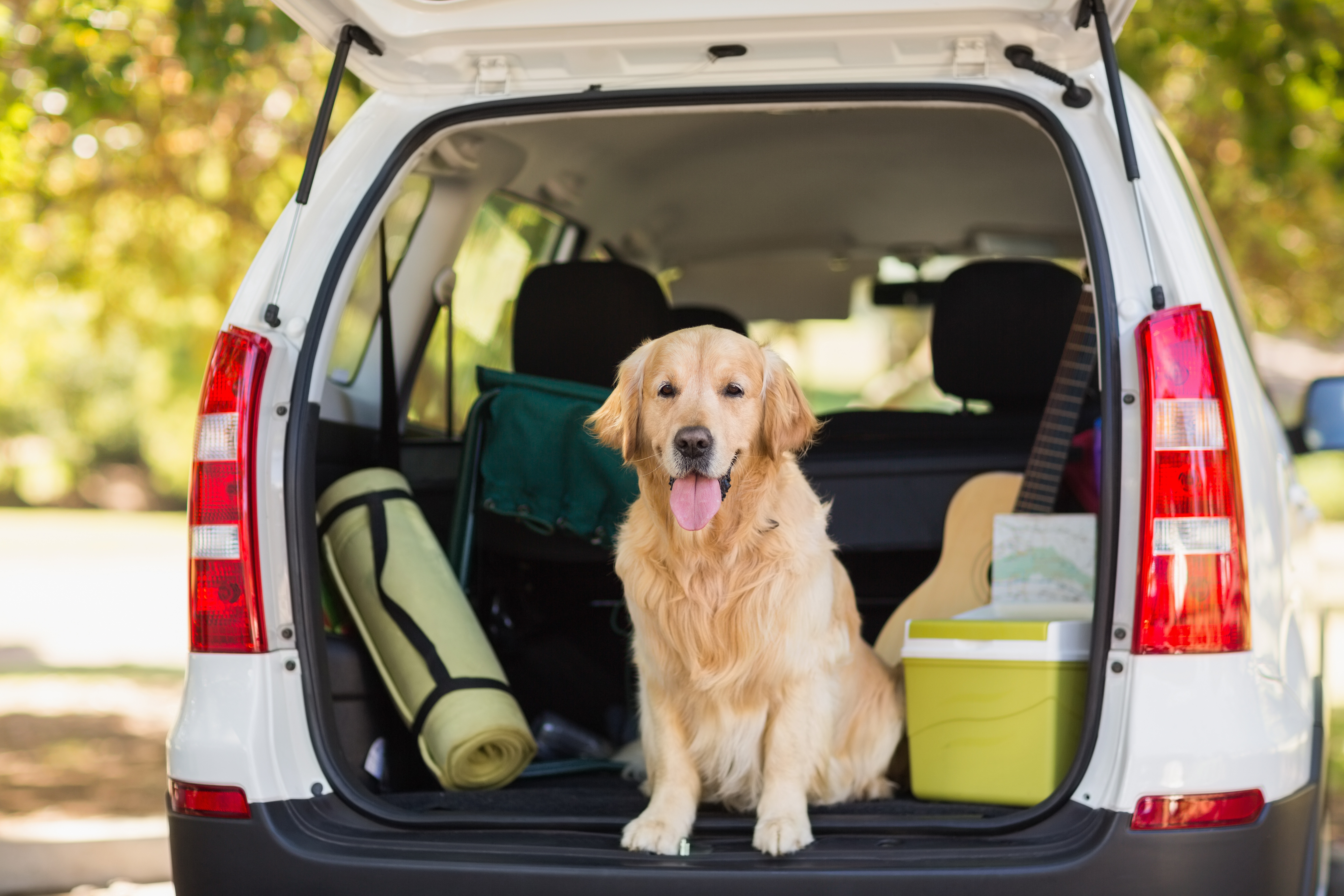Traveling with Your Pets!
June 23, 2017
Summer is peak travel time and many love to get out and adventure in new places with their two and four-legged family members. Because traveling and new places can be stressful for pets, it’s important to take your pet’s emotional state into consideration. Some pets (like most cats or small animals!) don’t enjoy traveling, and would prefer to be left at home or boarded. For pets that enjoy traveling, trips can be a lot of fun for everyone, but it’s important to be prepared ahead of time to make sure your pets are as safe and relaxed as possible.
First, think strategically about packing! Make sure that you have enough of your pet’s regular food for your entire trip. Changing food can cause GI upset, vomiting, or diarrhea, so keeping your pet’s diet consistent while traveling is important. While traveling, make sure you are frequently offering your pet water – at home he is probably used to accessing the water bowl whenever he is thirsty and helping himself, so you will need to make sure that he is getting frequent opportunities to drink. In addition to basic supplies like leashes and poop bags (for dogs) or a carrier and litter (for cats), it’s also important to have some of your pet’s favorite treats or toys with you. It is important to make sure your pet has identification tags with your contact information and that your pet is microchipped (and the contact information is up to date). That way, if for any reason your pet gets lost while traveling, you have the best chance of being reunited.
When you are traveling with pets, it is especially important to plan your route ahead of time. First, check with your veterinarian before you leave the area to make sure your dog is up to date on all vaccines and to see if there are any additional precautions or preventative medications your dog might need. Different regions can have different bugs or parasites that are common in the area and your dog might only be treated for ones common to your current region. In addition, not all lodging or sight-seeing destinations are pet friendly. For instance, dogs are allowed in most State Parks, as long as they are on leash, but they aren’t usually allowed on trails in National Parks. When planning your trip, it’s important that you know where your dog can and cannot go and that you come up with a plan for your dog if you are visiting somewhere that he cannot go. A car is not an appropriate place for any pet to hang out, especially in warmer weather. In weather over 65 degrees it is not safe to leave your pets in the car for more than a few minutes. Studies have found that even with windows cracked or a sun screen on the windshield, the temperature in a car rises to a fatal level very quickly.
In some cases, hotels may allow a pet to remain in the room while people are gone, but each hotel and policy is different, and some require dogs to be crated when alone. If you plan on leaving your dog unattended in a hotel room, it is helpful to have your dog crate trained to decrease stress of leaving him alone. Crate training is a useful tool for almost any dog, but especially for dogs that will be traveling. If you teach your dog to feel comfortable in a crate before you leave on your trip, you can bring it with you and use the crate to help your dog feel like a little bit of home is with him on the trip, and reduce the risk of destructive behavior (like chewing) in the places you’re staying. Crates can be a comfort to dogs during times of change in routine or surrounding. Keeping your dog crated while driving can reduce the risk of your dog reacting to toll booth employees, making a run for it at rest stops, or being stressed by passing vehicles, animals, or noise.
Sometimes in the hubbub of traveling, pets can get lost. Cats should always be in a crate or carrier when in the car. Dogs should be crated or otherwise secured in the car. There are also special barriers for dogs to stay in the back of your car (coming in all shapes and sizes for your vehicle) or seat belt/harness attachments. If you allow your dog off-leash in new areas, he might wander away and not respond to your calls so it is also important to keep your dog leashed in new places. Dogs are terrible at generalizing cues or commands. This means that although your dog might know his name and come back when called on a normal day hike, in a completely new environment he is less likely to respond to you and come. Keeping him on leash, especially until you know how he will behave, will help keep him safe and close to you. In addition, keeping your dog leashed while out and about is a good common courtesy.
If you are planning on traveling with your pet this summer, hopefully these tips help everyone have safe and fun adventures! Happy travels!




